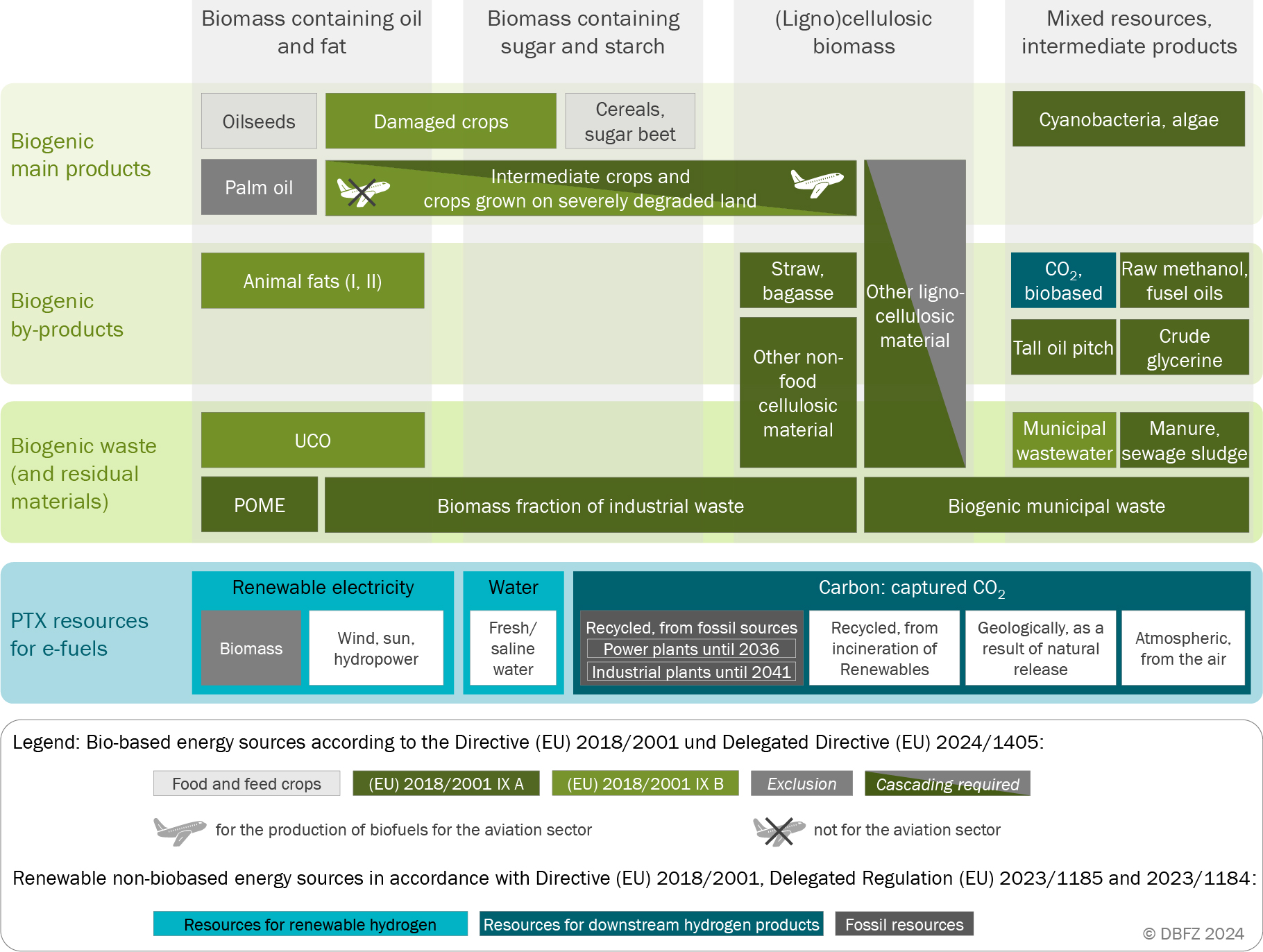Chapter 5: Resources and their mobilisation
The chapter on resources and their mobilisation first provides an overview of the regulatory and technological classification of resources and their usability. It then describes the status quo of resource use for the production of renewable fuels. This is followed by a chapter on definitions of potentials, national and international biomass potentials and the potential for electricity from renewable sources. At the end of the chapter, the resource potentials presented are summarised in terms of the corresponding fuel potentials that could be produced.
For optimal presentation and readability, we recommend downloading and
opening the monitoring report in a PDF reader.
Resource provision is the first step in the renewable energy value chain. Biogenic resources suitable for biofuel production can be categorised according to different criteria. From a regulatory perspective, the main categories are primary biogenic products (mainly crops), biogenic by-products, wastes and residues. In addition to their origin, the various biogenic resources are also categorised according to their physico-chemical properties.
The main feedstocks for renewable fuels of non-biological origin (RFNBO) are renewable electricity and water to provide green hydrogen through electrolysis, and a carbon source (usually CO2) for further processing into carbonaceous fuels. The electricity can be generated from wind, solar, biomass, geothermal or hydropower, and the carbon dioxide can be obtained either from processes (fossil or biogenic) or directly from the air.
The figure below lists the main resources according to their origin and composition (without weighting the current shares in actual use).
© DBFZ 2025, Reference: Naumann, K.; Cyffka, K.-F.; Costa de Paiva, G.; Nieß, S.; Neuling, U.; Zitscher, T. (2025): Resources for the production of renewable fuels, categorised according to legal requirements. Fig. 5-1
The bioresource potential in Germany and internationally can be assessed and estimated relatively well by now, although many questions remain to be answered for an efficient and sustainable utilisation strategy. These relate for example to quantitative and qualitative differences over time or in a regional context. The potential for sustainable biomass generally covers a wide range, depending primarily on the level of potential considered, the range of individual biomasses considered, the consideration of competing uses and sustainability requirements, the geographical reference, the data base and the time horizon and any associated assumptions (scenarios). Research and development must significantly improve knowledge of the status quo and future developments of renewable resources in order to better assess their contribution to a potential sustainable development in the transport sector and to be able to manage them in the context of a biomass strategy.
Recommended citation for the chapter: Naumann, K.; Cyffka, K.-F.; Costa de Paiva, G.; Nieß, S.; Neuling, U.; Zitscher, T. (2025): Resources and their mobilisation. In: Schröder, J.; Görsch, K. (eds.): Renewable Energies in Transport. Monitoring Report. pp. 77-100. Leipzig: DBFZ. ISBN: 978-3-949807-36-7. DOI: 10.48480/45hp-x131
